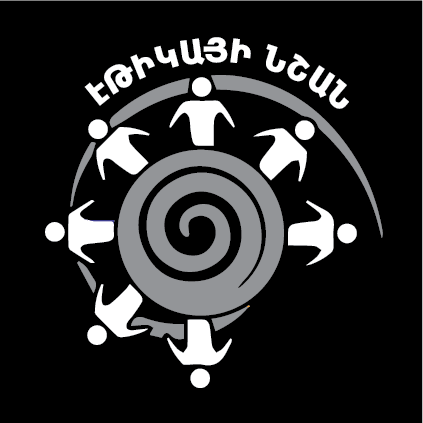In an interview with Fox News on October 25, Azerbaijani President Ilham Aliyev once again made false statements that have nothing to do with reality.
The Fact Investigation Platform has addressed some of them.
UN Security Council resolutions on the Artsakh conflict
Responding to the interviewer’s assertion that the Azerbaijani troops violated the ceasefire on September 27 and started a large-scale war in Nagorno Karabakh, Ilham Aliyev countered that Azerbaijan did not start hostilities, the Armenian side did.
In response to the interviewer’s remark that before the war Aliyev had repeatedly reiterated his demand for the withdrawal of Armenian forces from Nagorno-Karabakh, Aliyev insisted that his statements were in line with UN resolutions.
“In 1993, the UN Security Council clearly demanded the complete, unconditional and immediate withdrawal of Armenian forces from the occupied territories of Azerbaijan. “Unfortunately, these resolutions have not been implemented for 27 years,” Aliyev said.
Fip.am has already presented evidence about the preparation and launch of a large-scale war by Azerbaijan. This is proved by the unannounced mobilizations in the pre-war period, the recruitment of vehicles, the import of large quantities of military equipment from Turkey, and so on.
As for the UN resolutions, the President of Azerbaijan is resorting to manipulation.
In four resolutions passed by the UN Security Council in 1993, the demand for the withdrawal of troops was addressed not to Armenia but to local Armenian forces. Moreover, no statement or demand referred to the Nagorno-Karabakh Autonomous Oblast. Resolutions 822, 853, 874, 884 required the “local Armenian forces” to withdraw their troops from the towns of Kelbajar, Aghdam, Zangelan regions adjacent to the Nagorno-Karabakh Autonomous Oblast, and the town of Horadiz. In other words, there was no demand from the UN Security Council for the withdrawal of troops from the former NKAO administrative borders. Besides, while Azerbaijan claims that they are “liberating” their territories, the Azerbaijani armed forces have intruded into the territory of the former Nagorno-Karabakh Autonomous Oblast, for example, the city of Hadrut. Moreover, Aliyev states that their job will be incomplete without Shushi, which is part of the former Nagorno-Karabakh Autonomous Oblast.
Number of displaced Azeris
Aliyev notes that more than 700,000 Azeris from the “occupied” territories around Nagorno-Karabakh have been “ethnically cleansed”.
The seven adjacent regions of the Nagorno-Karabakh Autonomous Oblast (NKAO), which came under Armenian control in 1993-1994, have never been estimated to have a population of 700,000. Below are the population figures for those seven regions, according to the 1979 and 1989 census conducted by the Soviet Union.
| 1979 | 1989 | |
| Aghdam Region | 108,554 | 131,293 |
| Zangelan Region | 29,377 | 32,698 |
| Lachin Region | 47,261 | 47,339 |
| Qubadli Region | 26,673 | 28,110 |
| Jabrayil Region | 43,047 | 49,156 |
| Kelbajar Region | 40,516 | 43,713 |
| Fizuli Region | 76,013 | 89,417 |
| Total | 371,441 | 421,726 |
Thus, before the Artsakh war, about 422,000 people lived in those seven regions. However, it is important to note here that two of those seven regions (Aghdam and Fizuli) came under Armenian control only partially. And in fact, a maximum of 400,000 Azeris were displaced from those seven regions, not 700,000, as Aliyev claims.
It is noteworthy that more than 350,000 Armenians were displaced from Azerbaijan in 1988-1990.
Turkey’s involvement
According to Aliyev, there is no evidence that Turkey is directly involved in the ongoing war in Nagorno Karabakh. “Turkey only provides political support, that is enough,” Aliyev said.
However, there is a great deal of evidence proving Turkey’s involvement. According to prominent media outlets (CNN, BBC, The Washington post, and etc.) and information published by officials of different countries (Russia, France, Iran), Turkey has recruited numerous Syrian mercenaries and transferred them to Azerbaijan. The prestigious Stratfor intelligence platform wrote about the direct involvement of the Turkish Armed Forces. Moreover, the Russian “Kommersant” newspaper published on October 16 data on the presence and activities of the Turkish Armed Forces, which were obtained from the Russian intelligence services. According to their information, the Turkish Armed Forces left a large number of troops, weapons and ammunition in Azerbaijan after the joint military exercises with Azerbaijan in July-August this year, including about 600 Turkish military servicemen. According to sources cited by Kommersant, the Azeri attack was coordinated by Turkish Land Forces Commander Umit Dundar and Turkish Defense Minister Hulusi Akar.
Besides, official Azerbaijan denied the presence of Turkish F-16 fighter jets in Azerbaijan until the New York Times investigative journalist Christiaan Triebert tweeted about two F-16 fighter jets at Ganja airport on October 3, presenting a satellite image.
There are at least two F-16s at Ganja International Airport in Azerbaijan, our analysis of an Oct. 3 @planetlabs satellite image shows. The fighter jets are likely operated by the Turkish Air Force, alongside a possible CN-235 cargo aircraft. Here’s a short thread why. pic.twitter.com/de1XsmXXZr
— Christiaan Triebert (@trbrtc) October 7, 2020
According to new satellite images, as of October 19, there are six F-16 fighters at Gabala airport.
There were six F-16s at Gabala International Airport in Azerbaijan, an Oct. 19 @Maxar satellite image shows. It’s likely that these are the Turkish Air Force fighter jets that moved from Ganja after the city was shelled. https://t.co/49CICDF6QS
— Christiaan Triebert (@trbrtc) October 25, 2020
Armenian officials have not talked about targeting oil infrastructure
The host also asked Ilham Aliyev if they were concerned that the hostilities were taking place too close to oil infrastructure.
“In fact, we have concerns because high-ranking Armenian officials have announced that they will attack oil infrastructure and pipelines, one of the largest oil and gas terminals in Baku’s Sangachal district,” Aliyev said in response.
However, officials of Armenia and Artsakh have never declared about an intention to target oil infrastructure. Moreover, the Spokesperson for the Minister of Defense of Armenia Shushan Stepanyan made an opposite statement.
“We have repeatedly stated that we do not target oil and gas infrastructure, but regardless of the location, all military facilities, from where fire will be opened at Artsakh, will be destroyed,” she said on October 6 in response to accusations by the Azerbaijani side that Armenian units tried to hit the Baku-Tbilisi-Ceyhan oil pipeline.
Loosineh Voskanyan
Hovhannes Nazaretyan
[easy-social-share buttons="facebook,twitter,vk,telegram" counters=1 style="icon" point_type="simple"]
Deprecated: Function get_magic_quotes_gpc() is deprecated in /var/www/vhosts/fip.am/dev.fip.am/wp-includes/formatting.php on line 4387

 FACTOMETER
FACTOMETER









